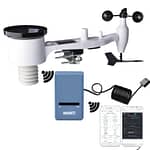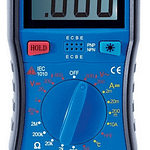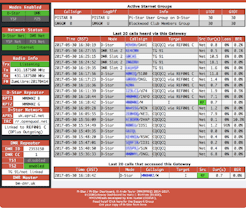If you’re a ham radio enthusiast looking to dip your toes—or dive headfirst—into the world of digital modes, Pi-Star with an MMDVM board is the Swiss Army knife of communication setups. Compact, versatile, and endlessly tweak-able, this duo takes your radio adventures to the next level. Let’s break it down.
One thing I feel though is that the layout still could be so much more it is very 1990’s still. Maybe I will spend some time and skin it fully.
In this instance we are using it with a MMDVM modem, on a Raspberry Pi 3b HaT. the article for that is here
What Exactly is Pi-Star?
Pi-Star is like that one friend who knows how to do everything. Developed by Andy Taylor (MW0MWZ), this open-source software transforms your Raspberry Pi into a digital hotspot. Pair it with an MMDVM (Multi-Mode Digital Voice Modem) board, and you’ve got a powerhouse capable of connecting you to the world of digital voice modes like DMR, D-STAR, YSF (Fusion), P25, NXDN, and even Pocsag paging (yes, paging still exists!).
Key Features: What Can Pi-Star Do?
- Multi-Mode Digital Voice Hotspot:
Talk across the globe in your preferred digital flavor—DMR, D-STAR, Fusion, and more. It’s like being a polyglot but for radios. - Cross-Mode Capability:
Ever wanted to bridge your Yaesu Fusion rig to a DMR talk group? Pi-Star makes it happen with tools like YSF2DMR. It’s like being a translator for your radios. - Remote Control via Web Interface:
Pi-Star’s web dashboard is sleek, intuitive, and packed with data. Whether you’re monitoring real-time activity or tweaking settings, it’s your mission control. - Access Point Mode:
Turn it into a mini repeater or connect it directly to your network for seamless operation. - OTA Updates:
Updating Pi-Star is a breeze. One click in the dashboard, and you’re running the latest and greatest version. - Advanced Tweaking Options:
Want to adjust power levels, fine-tune frequency offsets, or dive into reflector linking? Pi-Star doesn’t just hand you the keys—it gives you the whole garage.
Customization: How Deep Does the Rabbit Hole Go?
Pi-Star is ridiculously customizable, which is both its charm and challenge. Out of the box, it’s user-friendly enough for beginners, but under the hood, it offers advanced options for power users. Some highlights:
- Theme Your Dashboard:
Make it yours with custom colors and layouts. It’s like decorating your radio shack—but digital. - Fine-Tune Transmit and Receive Offsets:
Dial in your MMDVM board for crystal-clear communication. - Add or Block Talk Groups:
Configure specific talk groups and networks that suit your operating style. - Modes on Demand:
Switch between modes without breaking a sweat. Want D-STAR in the morning and DMR in the evening? Easy. - Add Personality:
Custom scripts, overlays, and settings can make your Pi-Star setup truly unique.
How Does It Perform?
Here’s the deal: Pi-Star with an MMDVM board doesn’t just work—it excels. Stability is rock solid, especially when paired with a quality board. Whether you’re running simplex hotspots or full-fledged repeaters, Pi-Star keeps up. Performance depends somewhat on your Raspberry Pi model and internet connection, but for most hams, it’s a set-it-and-forget-it solution.
Who’s It For?
- The Tinkerer: You love opening up settings menus and fiddling with parameters until 3 AM.
- The Globe-Trotter (Virtually): Talk to people halfway around the world without leaving your shack.
- The Budget-Conscious Ham: A Pi-Star setup costs less than most digital radios yet delivers immense value.
Final Verdict
Pi-Star with an MMDVM board is like discovering cheat codes for ham radio. It opens up worlds you didn’t even know existed and does so with a mix of reliability, customization, and outright fun. It’s not just a tool—it’s an adventure. Whether you’re just dipping your toes into digital modes or building an advanced setup, Pi-Star is worth every bit of the modest investment.
If you haven’t tried it yet, what are you waiting for? As I say: 73 and happy experimenting!
Hi I am Marcus, MM0ZIF, a licenced Radio Amateur, Doctor of Musicology, amateur weather enthusiast. I over the years have been a Amateur Radio Tutor, Examiner, and a Regional Manager for the Radio Society of Great Britain.
This site is dedicated more towards Amateur Radio and Weather, with an angle on Technology too. I also maintain https://havenswell.com/ which is my other blog which is more aimed at cooking, hobbies and life in general as well as businness and networking.












